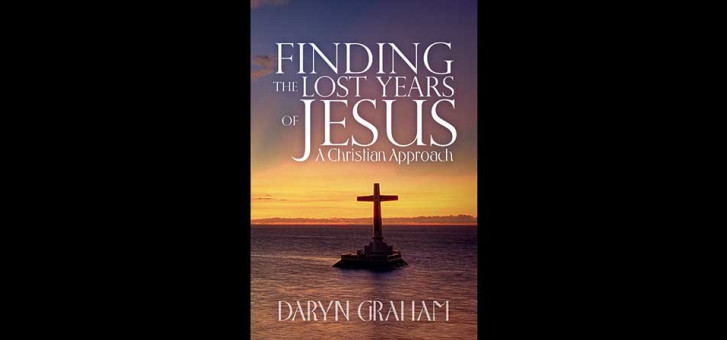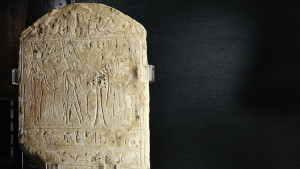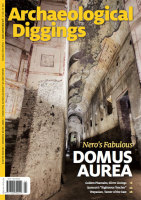There is a lot the Gospels don’t tell about Jesus. And so, over the centuries, writers have produced all manner of material purporting to illuminate the earlier years of His life. There are (later) “gospels” (rejected by the early church) that describe the child Jesus healing people or breathing life into clay birds. In modern times we have a range of material filling in the blanks, from novels, such as that of Anne Rice and Gerd Theissen, to the scholarship that deduces a Greek philosophical or Qumran background from Jesus’ reported ministry. At the other end is the scholarship that refuses to believe anything reported of Jesus that doesn’t stack up to modern sensibilities.
Part of the “problem” is that ancient biographies (including the Gospels) focus on the most important events of individuals. For many people of faith, the New Testament remains enough, as it focuses on what is important for faith, rather than what is needed for a rounded historical portrait. Others are keen to find out more.
In Finding the Lost Years of Jesus, Daryn Graham, somewhat tentatively, dips his toe into these treacherous waters. What he is trying to describe is a hole, though, and one can only say so much about a hole’s content—ultimately we fall back on describing what surrounds the hole. Graham relies heavily on what is described in the Gospels, and a traditional interpretation at that. “Lost years” may bring to mind wild theories of Jesus travelling to Asia or Britain, but readers who want reinforcement rather than demolition of the Christian Church’s traditional doctrines will find it here.
Some of Graham’s points are fairly obvious: Jesus went to synagogue regularly, knew His neighbours, needed both company and solitude—but it is no surprise Graham is a lay preacher, as the words flow easily, and he can take the smallest of Gospel sketches to create a panorama. He rightly suggests that we have to be careful not to view Jesus through our own cultural lens. Foremost, in line with recent scholarship, he reminds us that Jesus was Jewish and had an understanding of the Hebrew Scriptures. For a scholar such as Bishop Tom Wright, this is particularly important when it comes to the issue of Jesus as Messiah, as we can easily minimise the way the New Testament’s idea of a globally relevant Messiah operates in a Jewish setting.
It is also worth keeping in mind that the Gospels originate in an oral culture, which helps us come to grips with differences between the synoptic Gospels, and goes beyond simplistic arguments over what Jesus “actually” said and what is supposedly interpolation. Scholars such as James Dunn, Craig Keener and Wright (who could hardly be described as radical) are profoundly helpful here. They are also helpful for elaborating further on the points Graham makes about the deficiencies of various theories of Jesus as a teacher trained in the Far East, a Greek-style philosopher dispensing aphorisms or a Zealot keen on overthrowing the Romans.
Graham takes the traditional line that Jesus was not interested in worldly politics, “period,” rightly motivated by the desire to rebut theories that Jesus was a revolutionary. The trouble is that this can imply a split between the “spiritual” and the “physical” that is simply not so obvious in the Gospels. Jesus’ kingdom may be “not of this world,” but that doesn’t mean He isn’t threatening to worldly rulers. The Old Testament prophets showed that God is interested in worldly matters. The early Church was persecuted because they refused to submit to the Romans as the ultimate authority. And today, when the Church questions the materialism and injustice of our world, authorities can feel threatened and tell the Church to stick to “spiritual” matters. As renowned theologian Stanley Hauerwas is fond of reminding us, the Church stands in opposition to the world’s way of doing things, and this cannot help but be political, period. Jesus demonstrated that caring for people is a matter of spirit and body entwined, a point Graham touches on when he repeatedly describes how Jesus was interested less in the abstractions of religion and more in day-to-day concern for His fellow human beings.
Graham suggests that biblical scholarship is a matter of both archaeological and literary analysis, but there is only so much archaeology here-in. He tends toward the biblical. He doesn’t describe diet, travel times, clothes; his intention is devotional, and so he focuses on the development of Jesus’ personality and His likely worldview. This is not without its controversies. Graham rightly suggests that the biblical narrative portrays Jesus, from a human viewpoint at least, as precocious. But when we examine what in His personality is from God, and what is human, we find profound mystery. If Jesus was without sin, did He make mistakes? Wouldn’t He have needed to make some mistakes in order to “develop” as part of His human learning experience? If His “mind and soul” were “fully developed,” as Graham suggests, why did Jesus’ countrymen exhibit surprise at His abilities when He began His ministry? The mix of divine and human in Jesus has provoked theological and philosophical contortion over the years, and an acceptance of this mystery might be the only option.
Tom Wright has said that the main questions in Jesus scholarship are “Who is Jesus?” and, “So what?” and when Graham is answering the former, he is firmly focused on the second. And of course the point of the Gospels is to answer the “so what?’ Graham’s speculation on how Jesus’ personality developed and how His divine nature might have been manifested leads into how we emulate Jesus in prayer life, Bible study and social responsibility. At root, this book is an aid to faith. This is not to say that faith stands in opposition to scholarship. As Tom Wright puts it, all scholarship is speculation to some degree. Faith comes in at the level of motivation, and for those motivated to find out more about the traditional Jesus of the Church’s devotion, Graham’s book may prove a helpful tool.
182 pages. Paperback $19.95, Kindle $7.99.
CreateSpace Independant Publishing Platform, North Charlston. Available at amazon.com.






